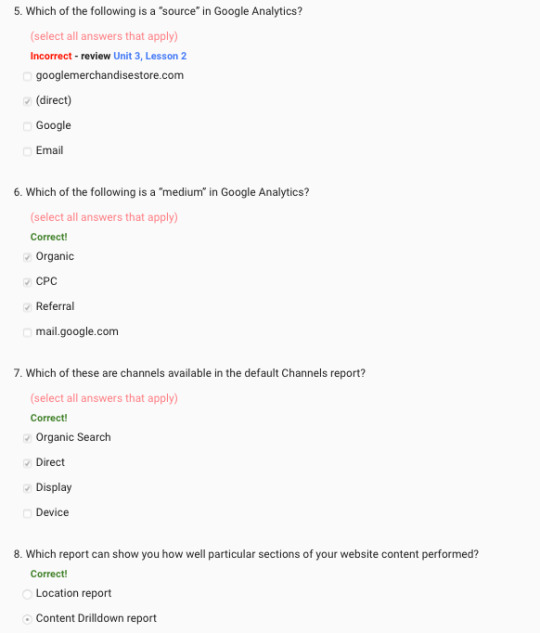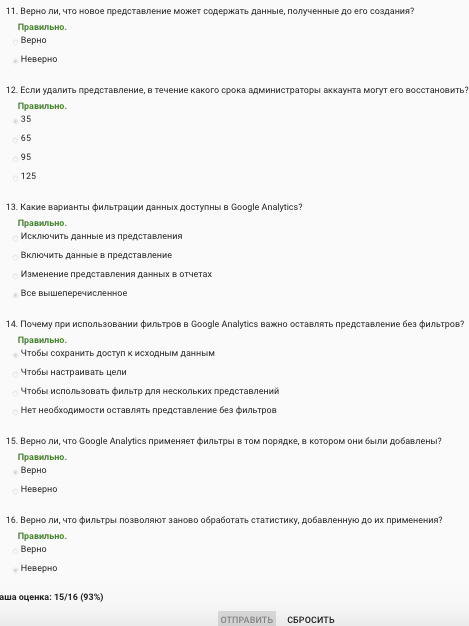Don't wanna be here? Send us removal request.
Text
Cover letter
Hey, My name is Anastasia Bredikhina. I believe my strong points are my Creativeness, Analytical thinking and Punctuality. My #1 goal will always be to meet your needs and deadlines. While working on a new project I like to speak with the client so that I can have a clear understanding of his/her needs and vision of the project. I’m honest and fair. Currently I am doing my MBA in Germany. My studies are focused on International Marketing and International Business Development. As for my career preferenses, I am interested in sphere of Search Engine Optimization (SEO), KPI's optimization, such as click rate and convertional rate. I also have experience with SMM and SEA. I am able to use such tools as Google Analytics and Google Adwords. I made my Bachelor's Degree in Statistics and Data Analysis at Higher School of Economics in Moscow. Therefore, I have pretty much experience of working with data and its interpretation. I also improved these skills as an assistant in Analytical department at Farfetch UK Limited. Thank you in advance for your time and consideration. I look forward to working with you soon. Kind regards,
0 notes
Text
Семантика
Семантическое ядро: язык yandex wordstat или yandex direct, подсказкиб ассоциации
rushanalytics - для создания семантического ядра из яндекс подсказок
Яндекс метрика или Google analytics - смотреть фразы, по которым на сайт уже переходили пользователи
SE Ranking
Отслеживать ключевой запрос в yandex wordstat по дате, чтобы сравнивать сезонность с ростом трафига в гугл аналитикс.
Смотреть сильных конкурентов - по каким словам конкурент близок к топу.
В строительстве:
1. Много низкочастотных уточненных запросов (из 5-8 слов)
2. Разбивка по регионам, шоссе, областям
3. Разбивка по типам материалов и объектам
4. Сделай сам - полезные материалы
Добавить: телефон в шапке - текстом!
социальные сети, чем больше, тем лучше - фб, твиттер, инстаграм, пинтерест
0 notes
Text
Graphic design additional resourses
Software
InDesign tutorials on Adobe.com: Adobe provides free introductory tutorials for the latest version of Adobe InDesign on their website.
Visual Design
Scott McCloud, Understanding Comix , 1993: This is an invaluable resource for designers and imagemakers. Scott's website is also a trove of resources for illustrators and comic artists: scottmccloud.com
Bruno Munari, Design as Art: An essential book for visual designers. Used copies are widely available. See more of Munari's work at www.munart.org.
Trinie Dalton, "Munari Star Chart," X-tra Online : Dalton's article on Bruno Munari, printing with vegetables, experimenting with image and making books, xerography, and ‘zines.
John Berger, Ways of Seeing, 1972: Also an essential book, and still available in print.
Start Making
Keith A. Smith, Volume I Non-Adhesive Binding: Books Without Paste or Glue, 2009: Smith's books are beautiful and informative, and particularly useful for designers wanting to make books, as well as poets, artists, and others.
Draw it with your eyes closed: Paper Monument now has this very popular book online.
Youworkforthem.com: a fantastic and comprehensive resource for designers. Be sure to check out the Retoro-style Animals books on the site (you need to register first).
0 notes
Photo

○╰ geometric. animated. shapes ╯●
@vengodelvalle
▢ ▢ ▢ ▢ ▢
8K notes
·
View notes
Text
Digital Marketing links
https://golos.io/ru--obrazovanie/@marklouren/kak-nachat-kareru-v-digital-marketinge-instrukciya-dlya-chainikov
0 notes
Text
Upwork Freelance
https://jff.name/odesk-fill-profile/
Hi, My name is Yevhenii Zapletin (English translation is Jack).
In my portfolio, are a few of the programs that I’ve developed. I believe my strong points are my Creativeness and Punctuality. My #1 goal will always be to meet your needs and deadline. When working on a new project, I like to speak with the client, so that I can have a clear understanding of his/her needs and vision of the project. I’m honest and fair.
Since 2010, I’m programmer in CRDF project for the visualization of meteorological data. Developing UI (Eclipse RCP) and server (big data, cluster programming, high load). Also from 2011, I develop Android applications and games.
Please take a look at my work history for comments from other clients. Thank you in advance for your time and consideration. I look forward to working with you soon.
I have a Bachelors in Software Engineering from Donets’k National Technical University, in the Ukraine. Listed below are my experience and skills.
- Android (2.x & 4.x) : Fragments API, Location and Sensors API, SQLite, UI, Services, Maps ,ActionBarSherlock, Parse.com, admob, etc; - Java Core: Java Core, Multithreading, Collections API, etc; - Frameworks: Eclipse RCP, JUnit; - Core web: XML, JSON, HTML/CSS, JavaScript; - IDE: Eclipse; - OS: Linux, Windows, Mac OS X; - VCS: Git, Mercurial, SVN; - Bug/Issue trackers: Jira, Assembla, Redmine; - SQL; - UML.
0 notes
Text
How to Critique
Since everyone strives to make their work better, comments are most helpful when you can offer your peer analysis that goes beyond “I like that” or "blue is my favorite color." Feedback is essential. To approach the process of critique, we will be using any or all of the following strategies:
Focus on what you see
Observe the physical, tactile qualities of the image. Describe the materials used, the quality of line, how abstracted the representation is—is the image a realistic representation or more stylized, expressive or notational? If the subject is an animal, how much of the animal is depicted: its entirety or a distinctive feature or two that conjures or stands in for the whole? Does the image depict volume and mass or is it flat? What are the predominant colors or texture? Is the image high contrast or low? Transparent?
Discuss the associations and connotations of an image
It’s impossible to separate or isolate the tactile materiality and the way a mark is made, from carrying or implying significance. So another way to talk about the image is to focus on what associations or connotative meaning it brought up for you. For example, you may interpret an image’s transparency as subtlety or something ephemeral. Or maybe translucence suggests layering and depth. Or perhaps, for instance, the transparency is intended to suggest fog or mist. Or it connotes obscuring, or camouflage, of being veiled or in shadow.
When deliberately and intentionally placed in context in a composition, the power of message and interpretation may be released and amplified. During week three and four, creating book spreads offers opportunities to discuss dynamic composition, looking at ways of establishing hierarchy, connotation and narrative. Explore and develop creating hierarchy and narrative in your own compositions, and this first-hand experience will help you to establish a criteria in order to talk about the work of others.
Make time with other humans to develop your own creative work
Any chance you have to show and discuss live work, to be in the same space with other humans, is best of all. We all spend a lot of time online, but there is no substitute for the spontaneity, nuance and inspiration generated by working, discussing and critiquing your work—and that of others—in real time and physical space. Take a class or start your own imagemaking league. Meet regularly to make things, or present and talk about each others' in-progress work. This is how you can continue to develop your work: make a lot and talk about what your work means, what direction it's going. Keep experimenting, keep making.
0 notes
Text
Graph design
Our eyeballs record what we see or believe we see soaking up what is before us in a flash. Deliverying image to our brains. Measurable, quantifiable features like color, shape, size and position are sorted out at lightning speed seemingly without us giving much thought to this astonishing maneuver.
Simultaneously, we interpret an image based on the classic book of personal experiences. Generally, agreed upon ideas, expertise, and incredibly specific knowledge. An image might look like it real life corner part or not. It may communicate or conveying information or standing for symbolize thoughts or ideas It may resonate in a personal way, or as intended to influence thought, sentiment, and mood, behaviors, and beliefs, like, for instance, propaganda.
Images may even bring about chemical reactions in the viewer's brain.
In our hypersaturated commercial imagescape, overexposure provokes little or nothing, or the image may be decorative or consist wholly of embellishment.
And if little light falls on the image, do we still perceive the colors luminescence reflecting to our eye in the same way?
We formulate an initial response to an image, to the subject itself, or we might infer something expressive from the way the image is made, its intonation, style or intensity. Images may be recognizably three dimensional, or abstracted, flattened, distorted or just a shorthand notation. 1:38 We read meaning, or rather form of perception based on context or an images relationship to other elements, it's relative size, placement, or importance. 1:49 Our reads are not stable, nor fixed, and once we release an image into the world, we cannot control how it is perceived. 1:59 In graphic design, texts and images are brought together and the graphic designer adjust the relationship among the elements to release new perception and meaning. 2:09 Truly, the convergence of words and pictures changes everything, images maybe used straightforwardly to illustrate or interpret text, to deliver information, to make the words clearer or not to confound and disorient or vice versa. 2:25 Placing text and image together creates associations. It can deliver messages or influence promote or give rise to that poetic moment that makes life worth living or undertake a multitude of other functions. 2:40 Roland Barthes writes, formerly, the image illustrated the text, made it clearer; today, the text loads the image, burdening it with a culture, a moral, an imagination. 2:52 This is important. Graphic design is powerful. You are tasked with using your power wisely.
0 notes







